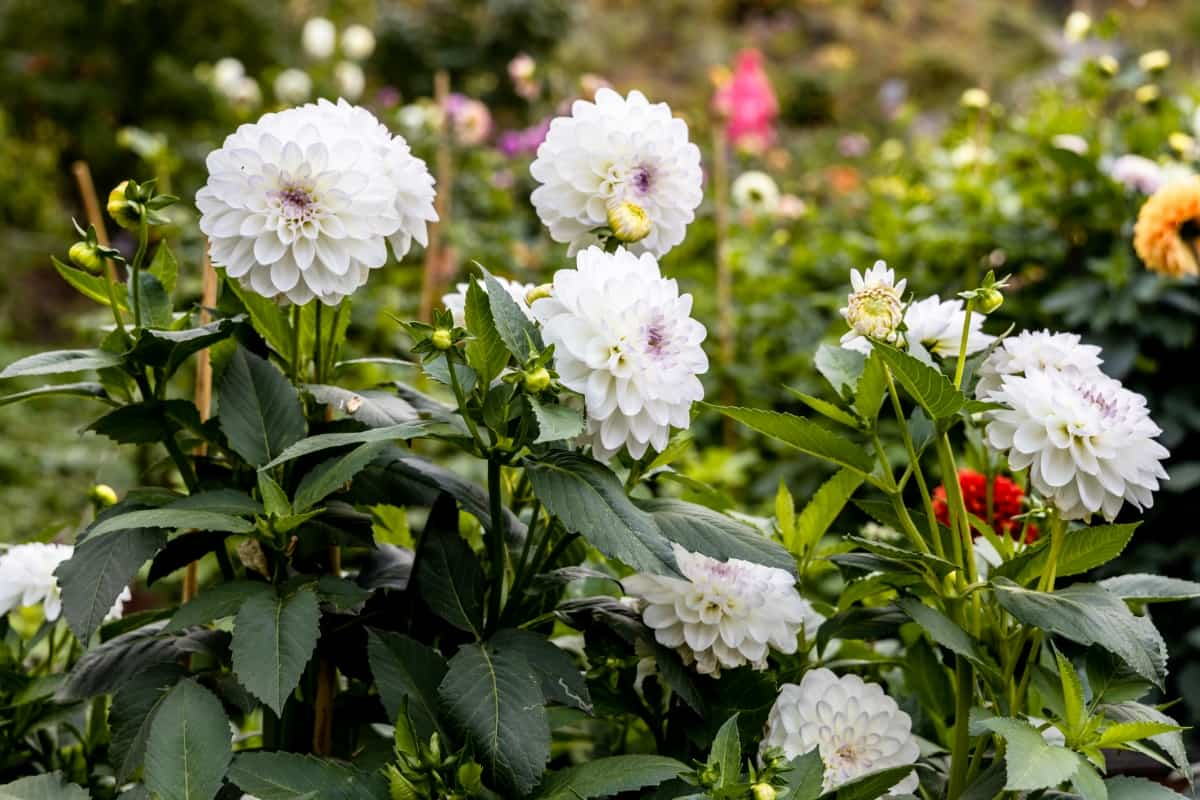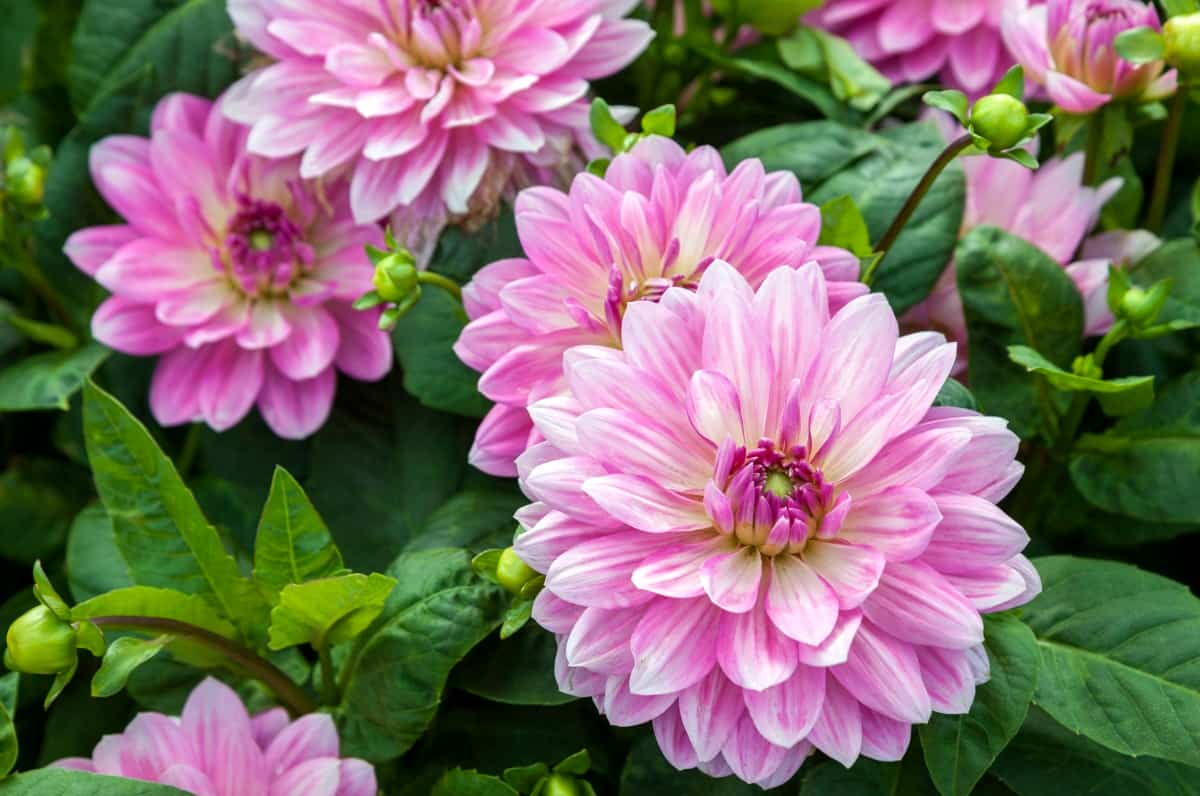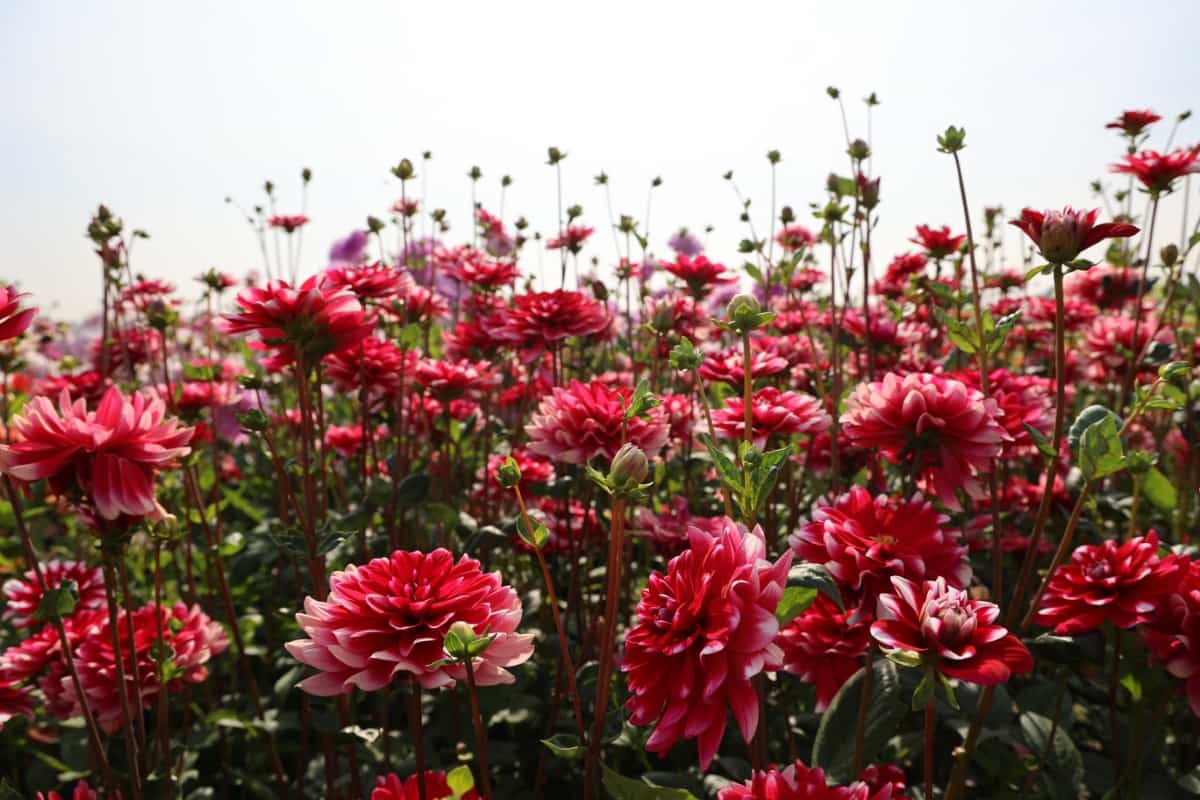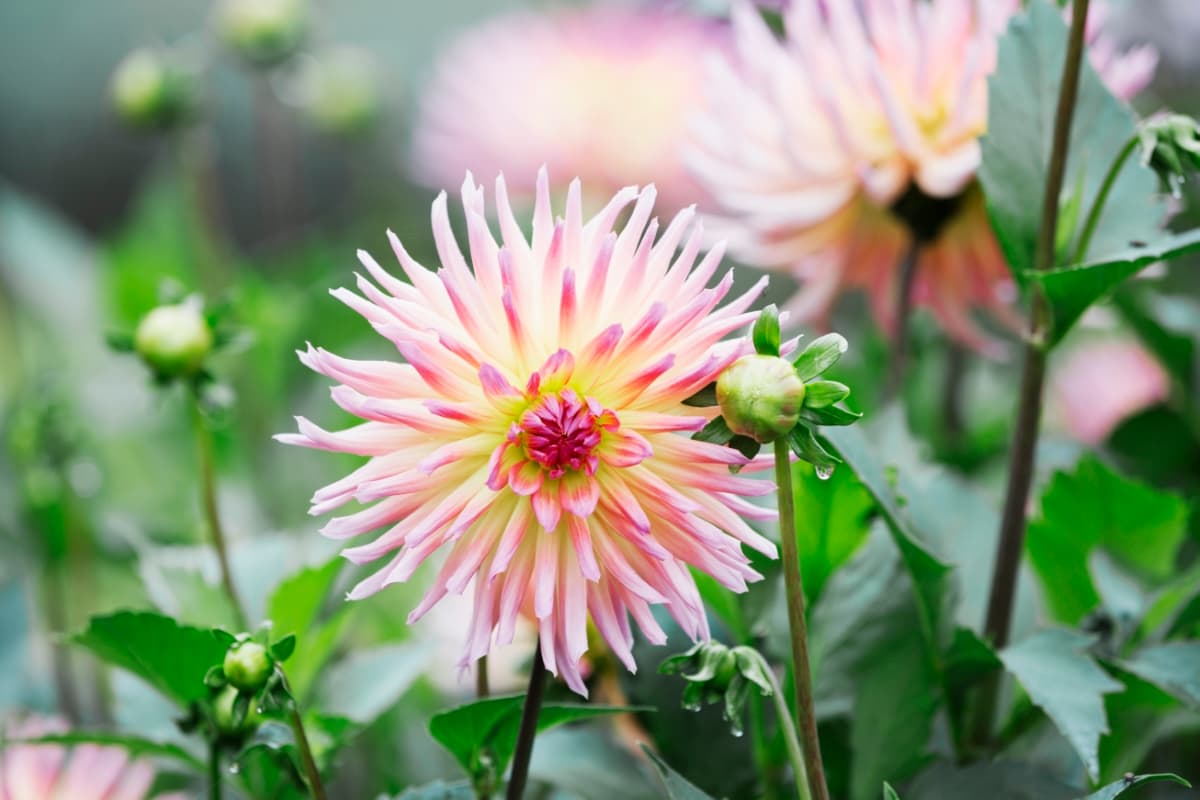With their spectacular display of colors and forms, Dahlias captivate gardeners and flower enthusiasts alike. These versatile blooms range from simple daisy-like singles to complex dinner-plate-sized doubles, making them a favorite for any garden setting. Dahlia grow bags have revolutionized how these beauties are cultivated, offering a flexible and efficient method for growing dahlias in various environments. This approach simplifies planting dahlia tubers in grow bags, and streamlines dahlia care in grow bags, making it accessible to gardeners of all levels.
Overview of Dahlias
Dahlias are known for their diverse sizes, colors, and petal configurations, making them a dynamic addition to any garden or landscape. Their ability to bloom from mid-summer through fall provides a prolonged period of vibrant color when many other plants begin to fade. Starting dahlia tubers in bags, coupled with the right dahlia support and trellising in grow bags, ensures these stunning flowers thrive and reach their full potential, bringing endless beauty to gardens and homes.
Advantages of Using Grow Bags for Dahlias
Grow bags offer numerous advantages for dahlia cultivation, from improved soil conditions to enhanced mobility. Tailoring soil mixtures for bagged dahlias optimizes their growth and flowering by meeting their unique requirements effectively. The fabric of the bags allows for excellent drainage and aeration, key factors in preventing root rot and other common issues associated with overwatering.
Additionally, the portability of dahlia grow bags enables gardeners to easily move plants to capture the ideal sunlight requirements for dahlia bags and protect them from adverse weather conditions. This method also facilitates organic dahlia cultivation in grow bags by permitting precise control over soil quality and pest management. With these benefits, growing dahlias in grow bags not only maximizes the beauty of these flowers but also enhances the gardening experience through ease and efficiency.

Planting Dahlias in Grow Bags
Selecting the Right Grow Bags
Choosing Suitable Grow Bag Size and Material
The success of growing dahlias in grow bags begins with selecting the right size and material. A size of at least 5-10 gallons is recommended to accommodate the dahlia’s root system, providing ample space for growth. The material of the grow bag is equally important, with fabric bags being a popular choice due to their breathability, which promotes healthy root development by allowing excess water to escape and ensuring proper aeration.
Considering Drainage and Aeration Needs
Drainage and aeration are critical factors when choosing to grow bags for dahlias. High-quality bags ought to incorporate features that deter water accumulation, a prevalent problem that can result in root rot and other ailments. The porous nature of fabric grow bags naturally enhances drainage and airflow, creating an ideal environment for dahlia roots to thrive, minimizing the risk of fungal diseases, and promoting robust plant health.
Soil Preparation for Dahlias
Preparing the Ideal Soil Mix for Dahlias
Preparing soil for dahlias in grow bags involves creating a mix that balances drainage with nutrient retention. An optimal soil mix for dahlias in containers consists of a combination of potting soil, compost, and either perlite or vermiculite. This blend promotes robust growth by providing a loose and fertile environment. Incorporating organic matter enriches the soil, encouraging organic dahlia cultivation in grow bags by fostering a nutrient-rich environment that supports vibrant blooms.
Adjusting Soil pH and Nutrient Levels
Dahlias prefer soil that is slightly acidic to neutral, ideally with a pH range between 6.5 and 7.0 for optimal growth. Testing the soil mix and adjusting the pH with lime or sulfur ensures the right conditions for dahlia growth. Nutrient levels, particularly phosphorus and potassium, are crucial for flower development and overall plant health and should be balanced in the soil mix to promote maximizing dahlia yield in grow bags.
Planting Dahlia Tubers
Selecting Healthy Dahlia Tubers
The foundation of a successful dahlia garden in grow bags starts with selecting healthy dahlia tubers. Look for firm, plump tubers with visible “eyes” or growth points, as these are indicators of a viable plant ready to grow. Avoid tubers that are wrinkled or show signs of rot, as these are less likely to produce healthy, vibrant dahlia plants.
Planting Depth and Spacing Guidelines
Planting dahlia tubers in grow bags requires careful attention to depth and spacing to ensure optimal growth. Tubers should be buried at a depth of 4-6 inches, ensuring the eye is oriented upwards. Spacing depends on the variety, but generally, leaving 12-18 inches between tubers allows enough room for each plant to develop fully. This spacing helps prevent overcrowding, leading to reduced air circulation and increased disease pressure.
Watering and Moisture Management
Establishing a Watering Routine
Watering dahlias in fabric bags is a balancing act that requires establishing a consistent routine. Dahlias need regular watering to thrive, but the soil should not be waterlogged. The watering schedule will vary based on factors such as temperature, humidity, and the type of grow bag used. Fabric bags, being more breathable, generally necessitate more frequent watering compared to other materials.
Avoiding Overwatering and Ensuring Proper Drainage
Overwatering is a common pitfall in dahlia care, leading to root diseases and poor plant health. Ensuring proper drainage in Dahlia grow bags is essential; fabric bags naturally facilitate this. However, monitoring soil moisture levels and adjusting watering practices accordingly is still important, especially during rainy periods or in humid climates.
In case you missed it: The Best Fertilizer for Dahlias: When and How to Apply

Fertilization and Nutrient Needs
Fertilizer Selection for Dahlias
Fertilizing dahlias in grow bags supports their vigorous growth and stunning blooms. A balanced, slow-release fertilizer applied at planting and throughout the growing season provides the essential nutrients dahlias need. Additionally, incorporating a bloom-boosting fertilizer can enhance flower production, ensuring a bountiful display of dahlia flowers.
Feeding Schedule for Optimal Growth
Establishing a feeding schedule that aligns with the dahlia’s growth stages ensures the plants receive the right nutrients at the right time. Start with a balanced fertilizer at planting and switch to a phosphorus-rich formula as the plants begin to flower. Every 4-6 weeks, regular feeding supports continuous growth and blooming, maximizing the dahlia yield in grow bags.
Sunlight and Temperature Requirements
Providing Adequate Sunlight
Sunlight is a critical component of dahlia care in grow bags, with these flowers thriving in full sun to partial shade. Dahlias require at least 6-8 hours of sunlight daily to produce strong, healthy plants and vibrant blooms. Positioning grow bags in a location that receives ample sunlight ensures that dahlias meet their light requirements, contributing to their overall health and flowering success.
Managing Temperature for Dahlias
Temperature control is vital for growing dahlias in bags, as they prefer moderate conditions and may struggle in extreme heat or cold. Using grow bags offers the advantage of mobility, allowing gardeners to move the bags to more suitable locations if temperatures become unfavorable, thus protecting the plants from temperature stress and ensuring optimal growing conditions.
Pruning and Maintenance
Pruning Dahlia Plants for Better Growth
Pruning and maintenance are key aspects of dahlia care, with regular pruning encouraging bushier growth and more blooms. Dahlia pruning and maintenance in grow bags involve removing dead or diseased foliage, pinching the main stem to promote branching, and cutting back tall stems to prevent toppling. These practices keep the plants healthy and focused on flower production.
Deadheading Spent Flowers
Deadheading, or removing spent flowers, is essential for extending the blooming period of dahlias. This practice prevents the plant from putting energy into seed production and encourages the development of new blooms. Regular deadheading ensures a continuous display of vibrant dahlia flowers throughout the growing season.
In case you missed it: How to Grow and Care for Dahlias: Planting Instructions for Beginners

Pest and Disease Management
Identifying and Treating Common Pests and Diseases
Dahlias can be susceptible to various pests and diseases, with aphids, spider mites, and fungal infections like powdery mildew being common issues. Early identification and treatment of these problems are crucial for maintaining healthy plants. Pest control for dahlia plants in grow bags often involves natural remedies or targeted treatments. In contrast, disease management for dahlia grow bags may require fungicidal applications or improved cultural practices to prevent outbreaks.
Implementing Preventative Measures
These can include selecting disease-resistant varieties, ensuring proper spacing for air circulation, and practicing good hygiene by removing debris and spent flowers. Implementing these measures helps reduce the risk of pest and disease problems, contributing to dahlia plants’ overall health and vigor in grow bags.
Harvesting and Overwintering
Knowing when Dahlias are Ready for Harvest
Harvesting dahlias from grow bags immediately ensures the best quality flowers for cutting and display. Dahlias are typically ready to harvest when the blooms are fully open but not yet showing signs of decline. Cutting flowers in the morning when well-hydrated results in longer-lasting arrangements and encourages the plant to produce more blooms.
In case you missed it: How to Overwinter Dahlias: A Guide to Cold and Warm Areas

Conclusion
Cultivating dahlias in grow bags merges the stunning allure of these blooms with the convenience and adaptability of container gardening, providing a gratifying and approachable endeavor suitable for gardeners at any proficiency level. This method ensures optimal growth conditions and simplifies maintenance, making it ideal for cultivating stunning dahlias.
- Feed Your Flock for Less: Top 10 Tips to Save on Chicken Feed
- Ultimate Guide to Ossabaw Island Hog: Breeding, Raising, Diet, and Care
- Hatching Answers: The Top 10 Reasons Your Chickens Aren’t Laying Eggs
- Eggs and Economics: Breaking Down the Cost of Raising Backyard Chickens
- Defend Your Greens: Proven Methods to Keep Iguanas Out of Your Garden
- Ultimate Guide to Cinnamon Queen Chicken: A Comprehensive Guide for Beginners
- Ultimate Guide to California Tan Chicken: Breeding, Raising, Diet, Egg-Production and Care
- Ultimate Guide to Marsh Daisy Chicken: Breeding, Raising, Diet, and Care
- 10 Types of Chicken Farming Businesses You Can Start for Profits